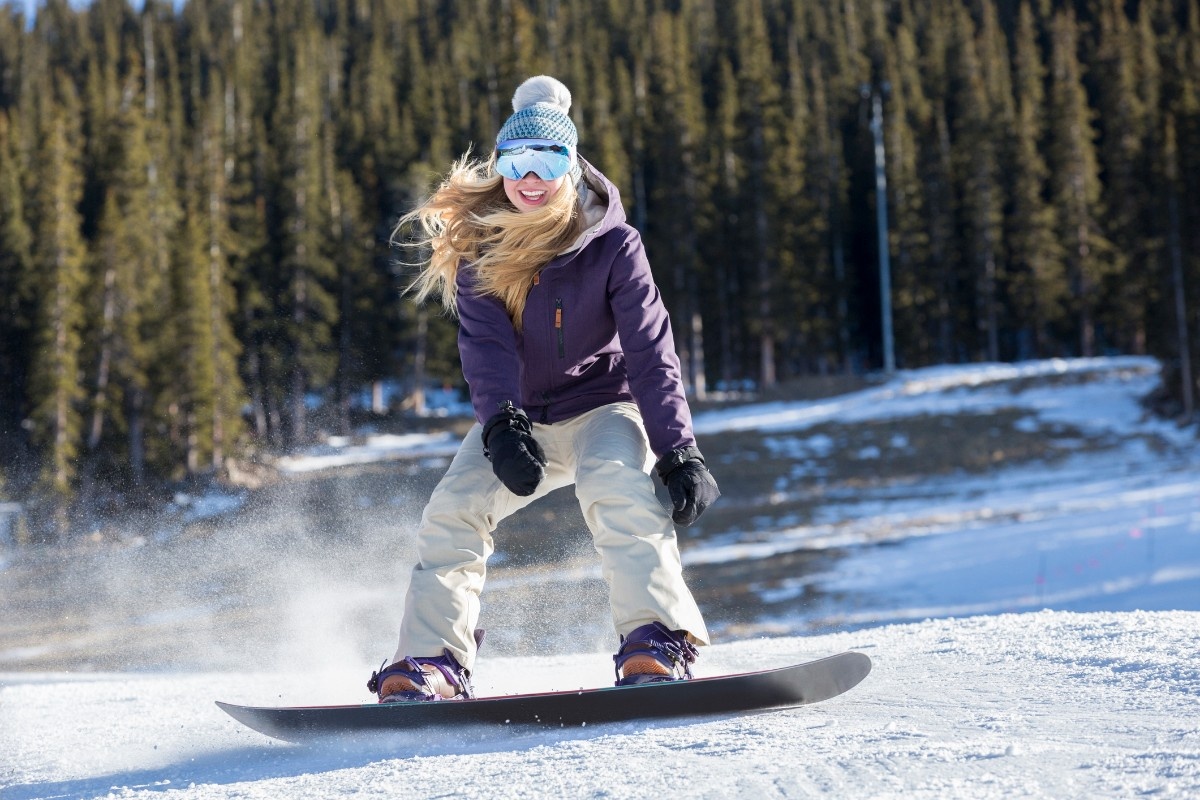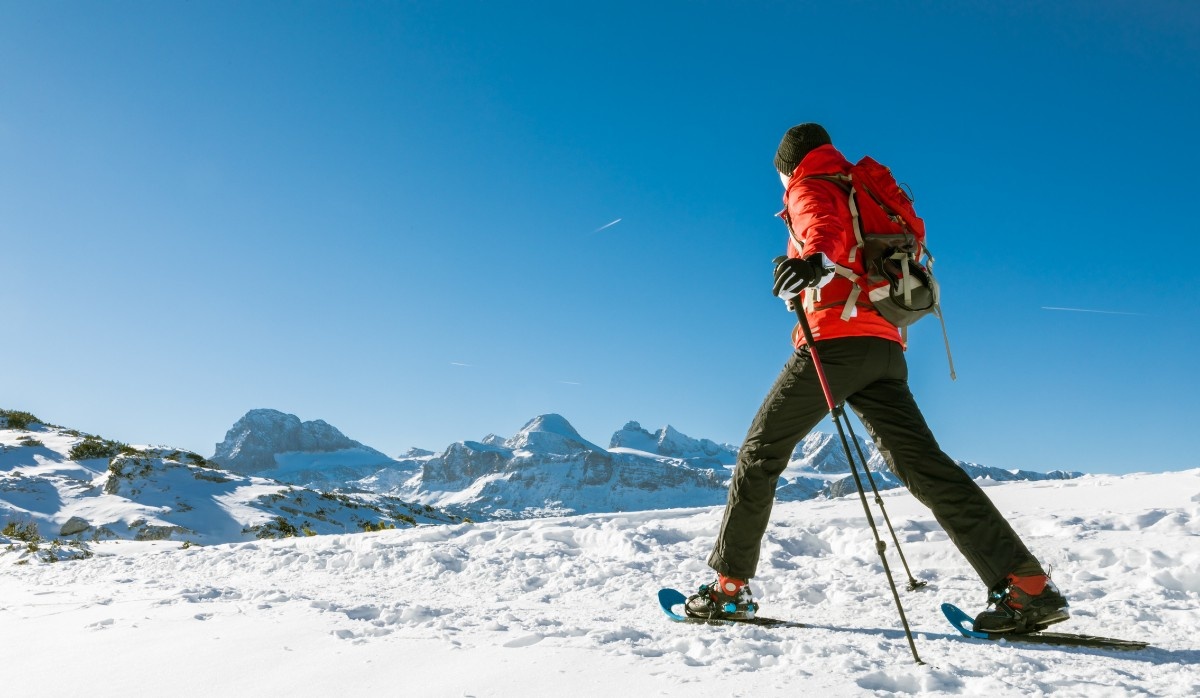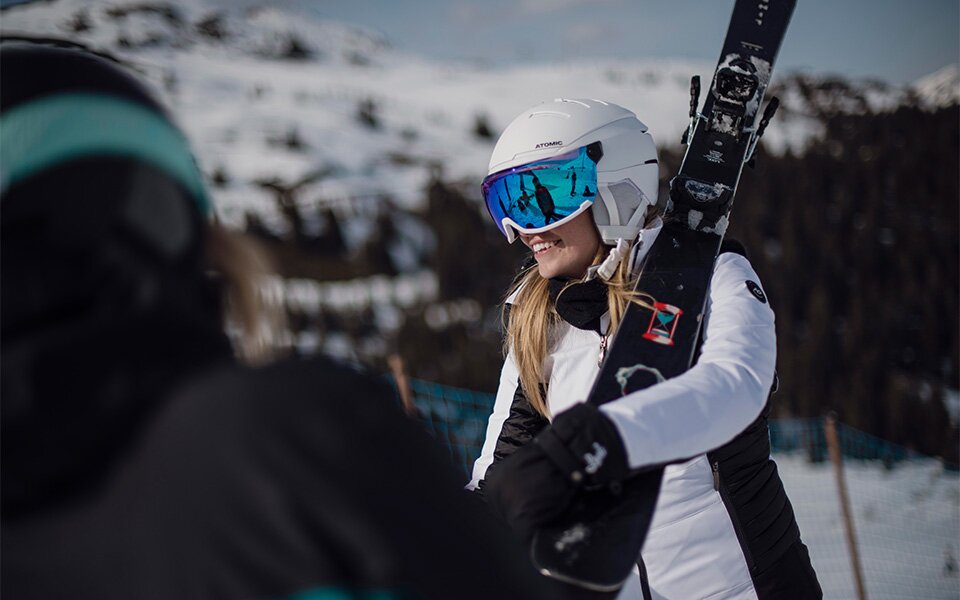Understanding Salopettes: History, Design, and Purpose
The Origins of Salopettes
Salopettes have a rich history rooted in the world of winter sports and workwear. The term "salopettes" originates from the French word "salopette," which refers to bib-and-brace overalls worn by workers. These practical garments were initially designed for labourers who needed protection and freedom of movement while working in challenging conditions. As winter sports gained popularity in the early 20th century, the design was adapted to meet the needs of skiers and other snow enthusiasts.
The evolution of salopettes has been closely tied to the development of skiing as a recreational activity. In the early days of skiing, participants often wore everyday clothing, which quickly proved inadequate for the demands of the sport. As skiing became more popular, especially after World War I, there was a growing need for specialised clothing that could withstand the harsh winter conditions and allow for the dynamic movements required in skiing.
The first dedicated ski pants were introduced in the 1920s and 1930s. These early versions were often made from heavy wool or gabardine and featured a high waist for added warmth and protection from snow. The bib-style design, characteristic of modern salopettes, began to emerge in the 1950s and 1960s. This design offered superior protection from snow and cold, preventing the gap between jacket and trousers that often let in unwanted snow and chilly air.
As materials science advanced, so did the design of salopettes. The introduction of synthetic fabrics in the mid-20th century revolutionised ski wear. Materials like nylon and polyester offered improved water resistance, durability, and lighter weight compared to traditional fabrics. This period also saw the emergence of specialised ski salopettes and snowboarding salopettes, as the two sports began to diverge in style and technical requirements.
The Anatomy of Modern Salopettes
Contemporary salopettes are marvels of functional design, incorporating a range of features to enhance performance and comfort in winter conditions. The key elements of modern salopettes include:
High Waist and Bib: The signature feature of salopettes is the high-waisted bib that extends up to the chest. This design provides excellent coverage and insulation for the core, crucial for maintaining body heat in cold environments. The bib also prevents snow from entering between the jacket and trousers, a common issue with traditional ski pants.
Shoulder Straps: Adjustable straps keep the salopettes in place and allow for a customised fit. These straps often feature quick-release buckles for easy on and off, even when wearing gloves.
Waterproof and Breathable Fabric: High-quality salopettes use advanced materials that repel water while allowing moisture to escape. This balance is essential for keeping the wearer dry from both external snow and internal perspiration. Waterproof salopettes are particularly crucial for activities like skiing and snowboarding, where frequent contact with snow is inevitable.
Reinforced Areas: The knees, seat, and inner ankles are typically reinforced to withstand the wear and tear associated with winter sports. This reinforcement is especially important in snowboarding salopettes, where riders spend more time in contact with the snow.
Ankle Gaiters: Built-in gaiters at the ankle prevent snow from entering the boots. These are often elasticated and may feature hooks to secure them to boot laces.
Multiple Pockets: Salopettes typically feature various pockets for storing essentials like lift passes, hand warmers, and small personal items. The placement and design of these pockets often differ between men's salopettes and women's salopettes to accommodate different needs and body shapes.
The Purpose and Benefits of Salopettes
The primary purpose of salopettes is to provide warmth, protection, and comfort during winter sports and activities. Their design offers several key benefits:
Insulation: The high-waisted design and full leg coverage provide excellent insulation, trapping warm air close to the body. This is particularly important in sports like skiing, where wind chill can significantly lower the effective temperature.
Weather Protection: Waterproof salopettes shield the wearer from snow, wind, and moisture, keeping them dry and comfortable even in challenging conditions. This protection is crucial for enjoyment and safety in winter sports.
Freedom of Movement: Despite their protective qualities, well-designed salopettes allow for a full range of motion. This is essential for performing the dynamic movements required in skiing and snowboarding.
Versatility: Modern salopettes are suitable for a variety of winter activities beyond skiing and snowboarding, including snowshoeing, sledding, and general snow play. Their adaptability makes them a valuable investment for anyone who enjoys winter outdoor activities.
Safety: Some salopettes incorporate reflective elements or attachment points for safety equipment, contributing to the overall safety of the wearer in winter environments.
Style: While functionality is paramount, salopettes have also become a fashion statement in winter sports. Many brands offer a range of colours and styles, allowing wearers to express their personal taste on the slopes.
Understanding the history, design, and purpose of salopettes provides a foundation for appreciating these essential pieces of winter sportswear. Whether you're a seasoned skier, a novice snowboarder, or simply someone who enjoys winter activities, salopettes offer unparalleled protection and comfort for your cold-weather adventures.
Types of Salopettes: Skiing, Snowboarding, and Beyond
Ski Salopettes
Ski salopettes are designed specifically to meet the demands of skiing, one of the most popular winter sports. These salopettes have several distinctive features that set them apart from other types:
Fit: Men's ski salopettes and women's ski salopettes typically have a more fitted cut compared to snowboarding styles. This streamlined design reduces wind resistance and prevents excess fabric from interfering with ski edges. The fit allows for layering underneath while maintaining a sleek profile.
Reinforcement: Ski salopettes feature reinforced areas at the inner ankles and knees. The ankle reinforcement protects against cuts from sharp ski edges, while reinforced knees provide durability for frequent bending and occasional falls.
Articulated Knees: Many ski salopettes incorporate articulated knee designs, which provide better mobility for the repetitive bending motion involved in skiing. This feature enhances comfort and performance, especially during long days on the slopes.
Ventilation: Zippered vents, often located on the inner thighs, allow skiers to regulate their body temperature. These vents are crucial for managing heat during high-intensity skiing or on warmer days.
Boot Compatibility: Ski salopettes often feature a tailored fit around the lower leg and ankle, with zippers or adjustable cuffs to accommodate ski boots. This design prevents snow from entering the boots and allows for easy adjustment of boot buckles.
The North Face salopettes are popular among skiers for their combination of performance features and stylish design. Many ski salopettes also incorporate RECCO reflectors, which aid in search and rescue operations in the event of an avalanche.
Snowboarding Salopettes
Snowboarding salopettes have their own unique characteristics, tailored to the specific needs and culture of snowboarding:
Looser Fit: Compared to ski salopettes, snowboarding styles typically feature a baggier, more relaxed fit. This allows for the wider range of motion required in snowboarding, particularly for freestyle riders performing tricks.
Reinforced Seat and Knees: Snowboarders spend more time sitting on snow (while strapping in bindings, for example), so their salopettes often have extra reinforcement in the seat area. The knees are also heavily reinforced to withstand frequent contact with the snow.
Lower Waist Options: While bib-style options are available, many snowboarders prefer a lower waist for easier layering with protective gear like back protectors. This design also aligns with the more casual, style-conscious ethos of snowboarding culture.
Enhanced Durability: Snowboarding often involves more contact with the ground and obstacles like rails in terrain parks. As a result, snowboarding salopettes are typically constructed with highly durable materials to withstand this increased wear and tear.
Style Factor: Reflecting snowboarding's roots in skate and surf culture, these salopettes often come in bolder colours and patterns. The style is an important factor for many snowboarders, with brands offering a wide range of designs to suit different tastes.
Pocket Placement: Snowboarding salopettes typically feature more accessible pockets, as riders can't easily access leg pockets while strapped to their board. Chest and hip pockets are common in bib-style designs.
All-Mountain and Versatile Salopettes
All-mountain salopettes are designed to perform well across various winter activities, offering a balance of features from both ski and snowboard styles:
Adaptable Fit: These salopettes often have a fit that falls between the streamlined ski style and the looser snowboard cut. This allows for versatility across different winter sports.
Modular Design: Some all-mountain salopettes feature removable bibs or adjustable elements, allowing users to adapt their gear for different activities or weather conditions.
Enhanced Breathability: Versatile salopettes often prioritise breathability to accommodate a range of activity levels, from high-intensity skiing to more leisurely snow activities.
Durable Construction: All-mountain styles are built to withstand a variety of winter conditions and activities, with reinforced areas and high-quality, abrasion-resistant materials.
Multiple Pocket Configurations: These salopettes typically offer a range of pocket options to suit different needs, from secure storage for ski passes to larger pockets for additional gear.
All-mountain salopettes are an excellent choice for those who enjoy multiple winter sports or for beginners who haven't yet specialised in a particular activity.
Backcountry and Touring Salopettes
For those venturing beyond groomed slopes into the backcountry, specialised salopettes are essential:
Lightweight Construction: Backcountry salopettes prioritise weight reduction to minimise fatigue during long ascents. They often use ultra-light, high-performance fabrics.
Superior Breathability: The high-intensity nature of backcountry skiing and splitboarding requires excellent moisture management. These salopettes often feature the most advanced breathable membranes available.
Durability: Despite their lightweight construction, backcountry salopettes need to withstand encounters with rocks, trees, and other obstacles in ungroomed terrain. They often incorporate tough, abrasion-resistant panels in key areas.
Extra Storage: Additional pockets are crucial for carrying avalanche safety gear and other essentials. Many backcountry salopettes feature large thigh pockets or chest pockets on bib designs.
Choosing the Right Salopettes: Fit, Features, and Functionality
Understanding Salopette Fit
The fit of your salopettes is crucial for both comfort and performance on the slopes. When choosing salopettes, consider the following aspects of fit:
Length: Properly fitted salopettes should reach the top of your ski or snowboard boots when standing upright, with a slight bunch at the ankles to allow for movement. This length ensures that no snow can enter your boots while providing enough flexibility for dynamic movements.
Waist fit: For bib-style salopettes, ensure the waist sits comfortably high on your torso, providing ample coverage and warmth. For lower-cut styles, make sure they sit securely on your hips without sliding down during activity. Many salopettes feature adjustable waistbands to fine-tune the fit.
Room for layering: Consider whether you'll be wearing thick base layers underneath. If so, you might need to size up to accommodate these layers comfortably. However, avoid choosing salopettes that are too baggy, as excess fabric can impede movement and performance.
Freedom of movement: You should be able to bend, squat, and move freely without restriction. Try mimicking the movements you'll be doing on the slopes when trying on salopettes to ensure a good range of motion.
Gender-specific fit: Women's salopettes and men's salopettes often have different cuts to accommodate body shapes. Women's styles typically have a more contoured waist and hip area, while men's styles may have a straighter cut.
When trying on salopettes, wear the boots and layers you plan to use on the slopes to get an accurate sense of fit. Remember that sizes can vary between brands, so always refer to the specific size guide provided by the manufacturer. Some brands offer short, regular, and tall lengths, allowing for a more customised fit.
Essential Features to Consider
When selecting salopettes, pay attention to these key features that enhance functionality and comfort:
Waterproofing: Look for waterproof salopettes with a high waterproof rating, typically measured in millimetres (mm). For casual use, 5,000-10,000mm might suffice, but for more intense activities or wetter conditions, look for 20,000mm or higher. Brands like North Face often use proprietary waterproof technologies in their salopettes.
Breathability: This is usually measured in grams (g) and indicates how much water vapour can pass through the fabric. Higher breathability (10,000g or more) helps prevent overheating and keeps you dry from the inside out during high-intensity activities.
Insulation: Decide whether you want insulated salopettes or a shell that you can layer underneath. Insulated options are warmer but less versatile, while shells offer more flexibility for varying conditions and activity levels.
Seam sealing: Look for fully taped seams, which provide better waterproofing by preventing water from seeping through the stitching.
Ventilation: Zip vents, usually located on the inner thigh, allow you to regulate temperature during active periods. This feature is particularly useful for high-intensity activities like skiing or snowboarding.
Reinforced areas: Check for extra durability in high-wear areas like the knees, seat, and inner ankles. This is especially important for snowboarding salopettes, which endure more contact with the snow.
Pockets: Look for a variety of secure pockets for essentials like lift passes, phones, and small items. Consider the placement and accessibility of pockets, especially if you'll be wearing a backpack.
Snow gaiters: These elastic cuffs at the ankle prevent snow from entering your boots. Ensure they're compatible with your ski or snowboard boots.
Articulated knees: This feature allows for easier bending and movement, enhancing overall comfort and performance.
Choosing Salopettes for Specific Activities
Different winter sports have unique demands, so consider your primary activity when selecting salopettes:
Skiing: For ski salopettes, look for a slightly slimmer fit with reinforced inner ankle areas to prevent damage from ski edges. Articulated knees are particularly beneficial for the repetitive movements in skiing.
Snowboarding: Snowboarding salopettes typically have a looser fit for greater freedom of movement. Look for extra padding in the knee and seat areas, as snowboarders spend more time in contact with the snow.
Backcountry activities: If you're into off-piste adventures, prioritise lightweight, highly breathable options with ample pockets for safety gear. Look for salopettes with full-length side zips for easy layering adjustments.
All-mountain use: For versatile performance across various activities, opt for salopettes that balance features for different snow sports. These often have a fit that's between ski and snowboard styles and include adaptable features like removable bibs.
When choosing salopettes for specific activities, also consider the typical weather conditions you'll encounter. If you often face extreme cold or wet conditions, prioritise higher waterproof and insulation ratings. For milder climates or high-intensity activities, focus on breathability and ventilation features.
Material Considerations and Technologies
The materials used in salopettes play a significant role in their performance. Here are some key considerations:
Fabric technology: Look for well-known waterproof breathable fabrics like Gore-Tex, eVent, or proprietary technologies from reputable brands. These materials offer a balance of weather protection and breathability.
Durability: Consider the denier (a measure of fabric thickness) of the outer material. Higher denier fabrics are more durable but may be heavier.
Stretch: Many modern salopettes incorporate stretch fabrics for improved mobility. This can be particularly beneficial for activities requiring a wide range of motion.
Eco-friendly options: If sustainability is important to you, look for salopettes made from recycled materials or produced using environmentally friendly practices.
When evaluating materials, consider the specific demands of your chosen winter sports and the conditions you'll face. High-performance materials often come with a higher price tag but can offer superior comfort and durability in challenging conditions.
By carefully considering fit, features, and materials, you can select salopettes that will enhance your winter sports experience, keeping you comfortable and protected in a variety of conditions. Whether you're looking for men's ski salopettes, women's snowboarding salopettes, or versatile options for various winter activities, understanding these key factors will help you make an informed choice.
Salopettes in Action: Performance Across Different Winter Sports
Salopettes for Skiing
Ski salopettes play a crucial role in enhancing the skiing experience, offering protection, comfort, and performance benefits tailored to the sport's unique demands. Here's how salopettes contribute to a great skiing experience:
Protection from the elements: Ski salopettes shield skiers from wind, snow, and cold temperatures, allowing them to focus on their technique and enjoy longer runs. The high waist and bib design of many ski salopettes provide extra protection for the core, preventing snow from entering between the jacket and trousers.
Freedom of movement: Well-designed ski salopettes offer a balance between a close fit (to reduce wind resistance) and enough room for the dynamic movements required in skiing. The articulated knee design common in ski salopettes allows for easy flexion and extension of the legs during turns and mogul runs.
Reinforced areas: The inner ankle and knee areas of ski salopettes are often reinforced to withstand contact with ski edges and frequent bending. This reinforcement extends the life of the salopettes and provides added protection for the skier.
Ventilation: Zippered vents, typically along the inner thigh, allow skiers to regulate their body temperature during intense runs or on warmer days. This feature is particularly useful for maintaining comfort during varying levels of exertion throughout the day.
Boot compatibility: Ski salopettes often feature ankle zips and snow gaiters that work seamlessly with ski boots to prevent snow ingress. The tailored fit around the lower leg ensures that the salopettes don't interfere with boot buckles or lift mechanisms.
For different types of skiing, salopettes may have specific performance characteristics:
Alpine skiing: Salopettes for downhill skiing often have a slightly more fitted cut to reduce drag and improve aerodynamics at high speeds.
Cross-country skiing: These salopettes are typically lighter and more breathable to accommodate the higher intensity of the activity. They often feature increased stretch for the wide range of motion required in cross-country skiing.
Freestyle skiing: Salopettes for park and pipe skiing may have extra padding in key areas and a looser fit for trick performance. They're designed to withstand frequent contact with features like rails and jumps.
Salopettes for Snowboarding
Snowboarding salopettes are designed to meet the unique needs of snowboarders, offering specific performance benefits:
Looser fit: Snowboarding salopettes generally have a baggier fit compared to ski salopettes, allowing for the wider range of motion required in snowboarding. This looser fit accommodates the sideways stance and facilitates easier movement for tricks and turns.
Enhanced durability: As snowboarders spend more time sitting on snow (while strapping in bindings, for example), their salopettes often have extra reinforcement in the seat area. This increased durability extends to other high-wear areas like the knees and lower legs.
Flexibility: Snowboarding requires a high degree of flexibility, especially for freestyle riders. Snowboarding salopettes often incorporate stretch fabrics or panels to allow for unrestricted movement during tricks and turns.
Pocket placement: Snowboarding salopettes typically feature more accessible pockets, as riders can't easily access leg pockets while strapped to their board. Chest and hip pockets are common in bib-style designs, allowing for easy access to essentials.
Style factor: Reflecting snowboarding's roots in skate and surf culture, these salopettes often come in bolder colours and patterns. While style doesn't directly affect performance, it's an important factor for many snowboarders and contributes to the overall experience of the sport.
Lower waist options: While bib-style salopettes are available, many snowboarders prefer a lower waist for easier layering with protective gear like back protectors. This design also allows for better compatibility with snowboarding jackets, which are often longer than ski jackets.
Salopettes for Backcountry and Ski Touring
For those venturing into the backcountry, salopettes need to meet a different set of performance demands:
Lightweight construction: Backcountry salopettes prioritise weight reduction to minimise fatigue during long ascents. The use of ultralight, high-performance fabrics allows for extended tours without the burden of heavy gear.
Enhanced breathability: The high-intensity nature of backcountry skiing and splitboarding requires excellent moisture management. These salopettes often feature the most advanced breathable membranes available, allowing sweat to escape rapidly during strenuous climbs.
Durability: Despite their lightweight construction, backcountry salopettes need to withstand encounters with rocks, trees, and other obstacles in ungroomed terrain. They often incorporate tough, abrasion-resistant panels in key areas without adding significant weight.
Extra storage: Additional pockets are crucial for carrying avalanche safety gear and other essentials. Many backcountry salopettes feature large thigh pockets or chest pockets on bib designs, allowing easy access to safety equipment and snacks.
Versatile design: Backcountry salopettes often include features like full-length side zips for ventilation and easy layering adjustments. Some models offer removable bibs or adjustable suspenders to adapt to changing conditions and exertion levels.
Compatibility with safety gear: These salopettes are designed to work seamlessly with avalanche beacons, harnesses, and other safety equipment essential for backcountry travel. They often feature beacon pockets and attachment points for safety gear.
Salopettes for Recreational Snow Activities
For casual winter enthusiasts engaging in activities like sledding, snowshoeing, or general snow play, salopettes offer several performance benefits:
Warmth and insulation: Recreational salopettes often feature additional insulation compared to performance-oriented models. This extra warmth is beneficial for activities that involve less intense physical exertion or periods of inactivity.
Waterproofing: Even for casual snow activities, waterproof salopettes are essential. They keep the wearer dry during prolonged contact with snow, enhancing comfort and enjoyment of winter activities.
Durability: Recreational salopettes are designed to withstand the rough and tumble of activities like sledding. Reinforced seats and knees protect against wear from frequent contact with snow and ice.
Easy care: As these activities often involve children or less frequent use, easy-to-clean salopettes are a significant benefit. Many recreational models feature durable water repellent (DWR) coatings that make snow and dirt easy to brush off.
Adjustability: Recreational salopettes often include features like adjustable waistbands and removable suspenders, allowing for a comfortable fit for a wide range of body types and sizes.
Visibility: For safety during low-light conditions, many recreational salopettes incorporate reflective elements, enhancing visibility during early morning or late afternoon winter activities.
The performance of salopettes across different winter sports demonstrates their versatility and importance in enhancing the winter sports experience. Whether you're carving down groomed slopes, exploring backcountry terrain, or enjoying casual snow days with family, the right pair of salopettes can significantly contribute to your comfort, safety, and enjoyment. From men's ski salopettes to women's snowboarding salopettes, each design is tailored to meet the specific demands of different winter activities, ensuring that enthusiasts can fully embrace their chosen winter sport.
Related Articles

Let us know you agree to cookies
We use marketing, analytical and functional cookies as well as similar technologies to give you the best experience. Third parties, including social media platforms, often place tracking cookies on our site to show you personalised adverts outside of our website.
We store your cookie preferences for two years and you can edit your preferences via ‘manage cookies’ or through the cookie policy at the bottom of every page. For more information, please see our cookie policy.





